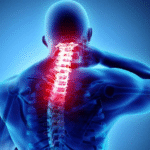When an individual is placed in state custody, whether in a jail, prison, or detention center, an inherent power imbalance is established. The state assumes responsibility for their care, safety, and well-being, an expectation often tragically unmet. This profound vulnerability means that any injury sustained while incarcerated is not merely an unfortunate incident, but a grave breach of trust and a violation of fundamental rights.
This article illuminates the critical importance of accountability and legal recourse for those who suffer harm while under the state’s direct supervision. It asserts that people injured in custody deserve more than silence and excuses; they deserve a voice, a thorough investigation, and the pursuit of justice that acknowledges their inherent dignity, even within the confines of incarceration.
Understanding the Duty of Care in Custodial Settings
Correctional facilities and their staff operate under a stringent legal and ethical “duty of care” towards individuals in their custody. This obligation is comprehensive, extending to various aspects of an inmate’s well-being. It mandates the provision of adequate medical care, including timely access to doctors, necessary medication, and appropriate treatment for illness or injury.
Furthermore, correctional staff are responsible for protecting inmates from foreseeable harm, whether from other inmates, through negligent supervision, or from the actions of staff members themselves. This duty also encompasses maintaining safe living conditions, ensuring proper sanitation, nutrition, and environmental safety. A failure to uphold any facet of this duty, whether through deliberate indifference, negligence, or outright abuse, can lead to severe and lasting consequences for those entrusted to the state’s care, constituting a serious legal violation that a civil lawyer Brooklyn would recognize as grounds for action.
Types of Injuries Sustained in Custody: Beyond Physical Harm
The injuries sustained by individuals in custodial settings can manifest in various devastating forms, extending far beyond the visible physical harm often associated with violence.
Common types of injuries in custody include:
- Physical Harm: Resulting from assaults by other inmates or staff, injuries due to falls or unsafe facility conditions, or the worsening of existing medical conditions from denied or delayed critical care.
- Psychological Trauma: Impacts from prolonged solitary confinement, psychological abuse, or witnessing violent acts.
- Emotional Distress: Manifesting as severe anxiety, depression, and Post-Traumatic Stress Disorder (PTSD).
- Cognitive Impairment: Caused by head injuries or long-term neglect of mental health needs.
- Systemic Deprivation: Injuries stemming from the lack of basic human necessities, leading to chronic health issues.
However, the psychological and emotional trauma can be equally, if not more, profound. Prolonged solitary confinement, psychological abuse, the witnessing of violence, and the systemic deprivation of basic human needs can lead to severe anxiety, depression, Post-Traumatic Stress Disorder (PTSD), and other debilitating mental health conditions. The long-term impact of these injuries can extend well beyond release, affecting an individual’s ability to reintegrate into society, maintain relationships, and lead a healthy, productive life, often requiring extensive, ongoing support.
Medical Negligence in Custody: A Critical Breach of Trust
Among the most egregious failures of the duty of care in custodial settings is the widespread issue of inadequate or denied medical attention. This form of negligence can have devastating consequences, often transforming treatable conditions into life-threatening emergencies. Examples range from failing to properly diagnose and treat chronic illnesses like diabetes or heart disease, to dangerously delaying emergency medical treatment for acute injuries, or simply denying access to necessary prescription medications.
Such medical neglect can lead to preventable pain, suffering, permanent disability, or even wrongful death, profoundly betraying the trust placed in custodial authorities. Holding facilities and their medical providers accountable for these breaches requires specialized legal insight. The specific expertise of Jail Injury Lawyers is crucial in these complex cases, as they understand the intricacies of correctional healthcare systems and how to prove that substandard care directly led to an inmate’s harm.
Violations of Civil Rights: When Power Is Abused
Beyond simple negligence, some injuries sustained in custody arise from deliberate and unlawful abuses of power, constituting profound violations of an individual’s civil rights. These are not merely mistakes; they are actions that breach fundamental constitutional protections afforded to all persons, even those who are incarcerated.
Examples of civil rights violations in custodial settings include:
- Excessive Force: Use of physical force by correctional officers beyond what is reasonably necessary, leading to severe injury or death.
- Cruel and Unusual Punishment: Imposition of conditions or treatment that are inhumane, such as prolonged, inhumane solitary confinement.
- Deprivation of Necessities: Withholding basic human needs like adequate food, water, sanitation, or medical care.
- Discriminatory Practices: Differential treatment or abuse based on race, religion, gender, sexual orientation, or other protected characteristics.
- Retaliation: Punishing an inmate for exercising their rights, such as filing a grievance or speaking with an attorney.
Pathways to Justice: Navigating the Legal System
For individuals who have suffered harm while in custody, pursuing justice involves navigating a legal system fraught with unique complexities and formidable challenges. Litigating against state or governmental entities, such as correctional facilities or police departments, often involves strict procedural requirements, including notice of claim statutes and sovereign immunity defenses, which can severely limit a victim’s ability to seek redress if not handled correctly. Collecting evidence can also be difficult, as facilities may control access to records or potential witnesses.
| Challenge Faced by Victims | How Legal Counsel Helps |
| Strict procedural requirements | Navigate notice of claim statutes and deadlines |
| Sovereign immunity defenses | Develops strategies to overcome governmental immunity |
| Difficulty collecting evidence | Secures records, interviews witnesses, and preserves crucial data |
| Fear of retaliation | Protects clients, ensures safe communication channels |
Despite these obstacles, legal avenues exist for victims and their families to seek accountability and compensation for their injuries. The first step is often to secure experienced legal counsel who understands the specific landscape of custodial injury claims. A Civil Lawyer Brooklyn can provide vital guidance, helping victims understand their rights, meticulously gather necessary documentation, and strategically pursue claims for negligence or civil rights violations within the prescribed legal frameworks.
Conclusion
For individuals who have suffered harm while in custody, legal action is about far more than just financial recovery; it is fundamentally about demanding accountability and fostering systemic change. While compensation can help cover the medical costs, therapy, and lost opportunities stemming from their injuries, the true victory lies in holding institutions and individuals responsible for their actions.
Each successful claim, often spearheaded by a New York Civil Rights Lawyer in cases involving constitutional breaches, sends a clear message that the duty of care in custodial settings is not a suggestion but a legal imperative. By shedding light on abuses and negligence, these cases contribute to broader reforms within correctional systems, ultimately enhancing safety and upholding the human right to dignity and proper care for all, regardless of their incarcerated status. It’s a fight for justice that extends beyond one individual, impacting the very standards of humane treatment within our carceral system.















